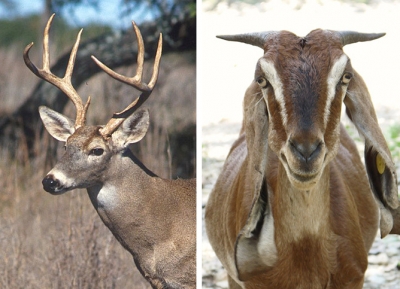
You may have seen-some of them in videos or photographs – animals that sport horns or antlers. Are horns and antlers the same? Do they have a purpose?
Horns are unbranched structures with a bony centre and covered in a layer of keratin – the substance found in our hair and nail. They invariably grow in pairs, the exception being the one-homed rhinoceros. Homs are permanent structures, and in most of the creatures, they grow continuously. Both male and female animals have horns. Homs can be seen in many animals such as cows, goats, etc.
Antlers are usually seen in animals such as deer, caribou, etc. They are made of bones, and are covered in a soft layer of skin. Unlike horns, antlers in most species are not permanent structures; they fall off. Again, unlike horns, antlers grow only in males. The exception is reindeer, in which both males and female sport them. Another way in which antlers are different from horns is that antlers branch out.
Homs and antlers also have different purposes. Antlers are usually used for mate selection during the breeding season (either to attract females directly or to discourage the presence or advances of rival males through display or combat). Homs, meanwhile, are generally used for “displaying social dominance, territoriality, and anti-predator interactions”.
Did you know?
Giraffes have short, bony growths called ossicones. Initially, they are just cartilage growths, but as the animals grow, they harden into bone and merge with the skull completely. Ossicones are normally covered in skin and fur.
Picture Credit : Google




